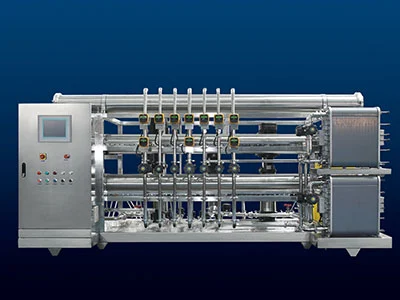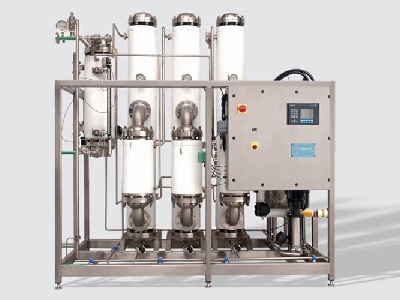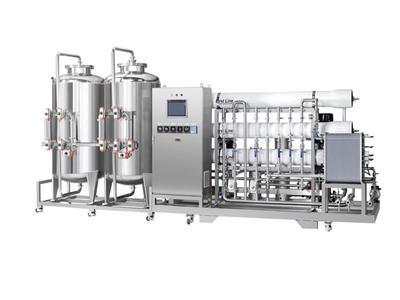Generally speaking, the design of reverse osmosis membrane system is carried out in the following ways and procedures:
When selecting reverse osmosis membrane elements for reverse osmosis plant design, first, the average water flux value of the membrane system and the operating water output of a single membrane element should be determined according to the design guidelines provided by the membrane manufacturer, combined with the characteristics of the raw water source and the SDI test value of the feed water.
In addition, after the type and specification of the membrane elements used in the system are selected, the unit water production of the reverse osmosis plant is divided by the operating water production of the selected membrane elements to obtain the number of membrane elements required by the system . Then determine the number of membrane elements that can be built into the reverse osmosis container according to the equipment space constraints and equipment dimensions, and then determine the number of membrane modules.
Based on the total number of membrane modules (that is, reverse osmosis pressure vessels), make a preliminary arrangement according to the principle that the ratio of the two pressure vessels before and after is slightly less than 2:1, and then use the reverse osmosis system design software provided by the membrane manufacturer to finally confirm the device Membrane module arrangement, membrane element model, product water flow rate, water recovery rate, system feed water pressure, concentrated water pressure, membrane element pressure drop, feed water osmotic pressure, and verify whether the saturation of various insoluble substances in the concentrated water system, LSI or S&DSI value and product water quality meet the design requirements.
Select and match other necessary components for the reverse osmosis system according to the calculation results and process requirements.
The reverse osmosis pressure vessel assembly of a large reverse osmosis plant should be arranged separately on the sliding frame, and the highest height of the pressure vessel arrangement should be convenient for loading and unloading membrane elements.
In large-scale reverse osmosis plants with a unit water production rate greater than 30 tons/hour, generally there are more pressure vessels equipped with 6 8040-type membrane elements (there are also cases where 7 membrane elements can be installed).
In any case, we should consider in the design that when the reverse osmosis plant is running (under pressure), the pressure vessel will be elongated according to the specific pressure situation (the elongation distance of the reverse osmosis pressure vessel equipped with 6 8040 membrane elements is generally around 10~15mm), and the diameter of the pressure vessel will also increase slightly (generally around 0.3~0.5mm), so when fixing the components and pipelines of the reverse osmosis plant, care should be taken not to limit the normal operation of the reverse osmosis pressure vessel expansion, otherwise it will cause warping of the pressure vessel.
Once the pressure vessel is warped, it may cause leakage of the U-shaped sealing ring of the built-in membrane element, resulting in channeling and seal leakage of the built-in O-ring of the connector connecting the membrane element.
The layout of pipelines, valves and instruments of the reverse osmosis plant should be easy to operate and adjust.
When the reverse osmosis plant is running, it is very important to control the water production rate and water recovery rate of the system. These need to be measured by the flow meter installed in the system. Therefore, when designing the device, first of all, the flow meter with superior performance and reliability should be selected first. Furthermore, the flow meter must be calibrated before installation and use.
In addition, care should be taken to prevent leakage between the U-shaped sealing ring installed on the end of the membrane element and the inner wall of the R/O pressure vessel during operation.
If there is a leakage, part of the feed water will bypass the reverse osmosis membrane element, which not only reduces the efficiency, but also the actual operating water recovery rate is higher than the water recovery rate calculated based on the product water flow meter and concentrated water discharge flow meter, which must be avoided.
When designing a large-scale reverse osmosis plant, consideration must be given to preventing or reducing the hydraulic shock load (such as water hammer and excessive water flow shock) on the membrane elements when the reverse osmosis high-pressure pump is started. Because the water hammer generated when the pharmaceutical reverse osmosis systems is started may cause damage to the membrane bag of the reverse osmosis membrane element and its connecting parts. Therefore, when designing a large-scale reverse osmosis plant, we recommend installing an electric slow-opening valve at the outlet of the reverse osmosis high-pressure pump to avoid water hammer and excessive water flow impact due to improper equipment startup procedures.


